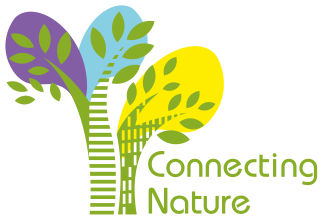
“Transforming cities and enhancing wellbeing through nature-based solutions: the experience of A Coruña”
From May 16-18, 2018, the City of A Coruña hosted the Horizon 2020 European Dialogue and Clustering Action: Transforming cities, enhancing wellbeing: innovating with nature-based solutions, which attracted 200 experts on nature-based solutions. The event was organized by the People-Environment Research-Group of the University of A Coruña, in collaboration with the Council of A Coruña.
Transforming Cities was an exceptional opportunity for cities, researchers and green enterprises to engage in enriching discussions about the main contributions of nature-based solutions for sustainable urbanization, fostering low-impact, liveable and resilient cities in Europe and worldwide.
María García, head of the Environmental Department of A Coruña City Council, presented the city’s Green Infrastructure Strategy as well as examples of the different nature-based solutions in the city during the event. The Green Infrastructure Strategy involves the creation of a Network of Natural Spaces of local Interest - such as the islands of San Pedro and the Tower of Hércules – as well the environmental restoration of two river areas for leisure. This work started two years ago, with the elaboration of the “Urban Biodiversity Map”. The Council will launch in the coming months a participatory process to involve citizens in the definition of the priorities and increase public participation in biodiversity conservation.
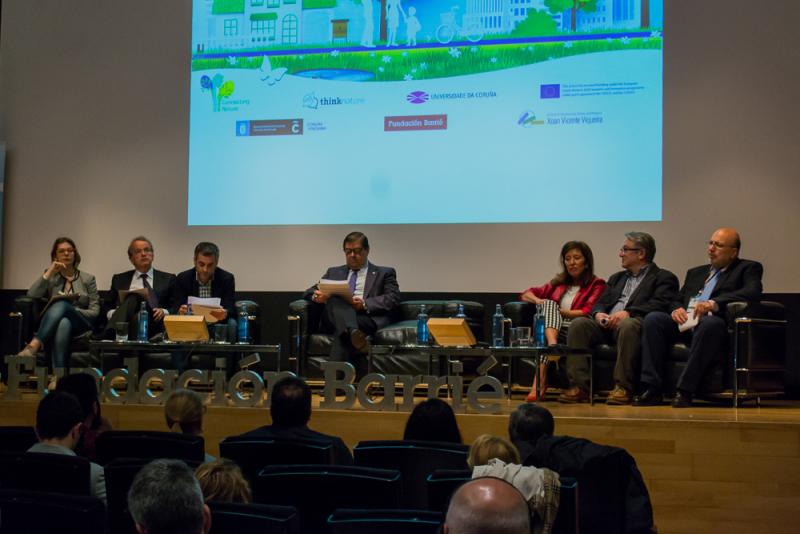
“A Coruña presented its Green Infrastructure Strategy in the Transforming Cities, focused on biodiversity conservation and increasing environmental awareness”
The restoration of green spaces for leisure is a major objective for A Coruña City Council in order to overcome the “nature deficit syndrome” in a city with a high population density and insufficient natural spaces. As an example, the Council plans to increase the extension of green areas by planting a total of 1500 trees a year and creating three new urban gardens. In A Coruña, the urban ecological gardens were most demanded by citizens through the participatory budgeting projects, in which people voted for proposals aimed at greening their neighbourhoods or improving the facilities of urban parks and spaces for leisure.
These interventions can help improve people´s quality of life and enhance their physical and psychological well-being. Our recent experience in urban gardening demonstrates that such community gardens can become meaningful spaces for community engagement and social reunion, while citizens produce food locally with zero food miles.
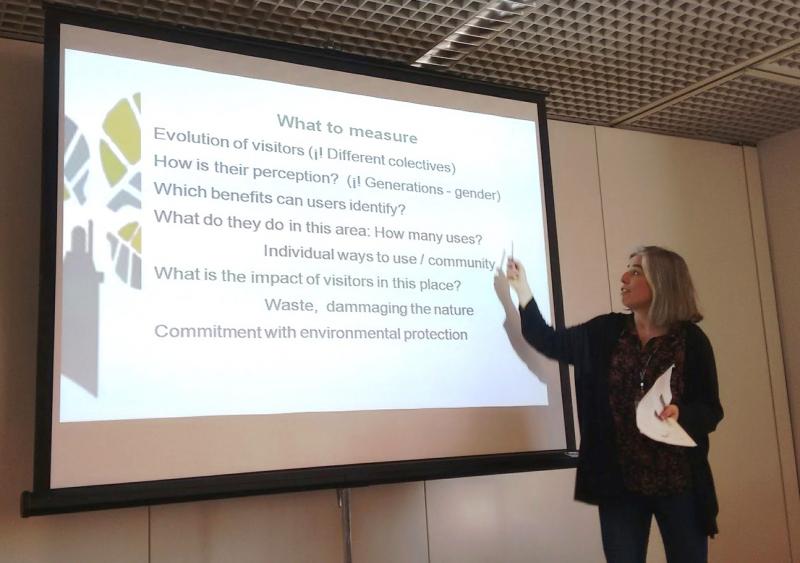
Nature-based solutions for Leisure: what impact and for whom?
As a city partner of the Connecting Nature project, we would like to learn more about how nature-based solutions can help us to design our city in the future. We are eager to increase our knowledge on the best methods to measure the different kinds of impacts that green spaces might have for the people and the environment. This was a matter of discussion in the cities-summit session on benefits and challenges of green infrastructures for leisure that we led during the Transforming Cities, together with Agnieszka Dziubała (City of Poznań) and Ángela Castrechini (University of Barcelona).
In order to increase our knowledge on the potential impact of green infrastructures, city-planners and researchers need to go further in the assessment of the different functions of natural areas as well as their potential benefits and negative effects, such as the phenomenon of gentrification as can be observed in the Barcelona and other big cities.
How many functions one park can have, depending on the gender or the age of the visitors? Do they enjoy nature in a more individualistic form or do people prefer to engage in collective and community activities? Are people living beside these green areas more committed to environmental protection? What kind of negative-side effects could occur? How to anticipate them? These are some of the questions we ask about cities when we talk about the evaluation of nature-based solutions.
Visiting local best practices in nature-based solutions
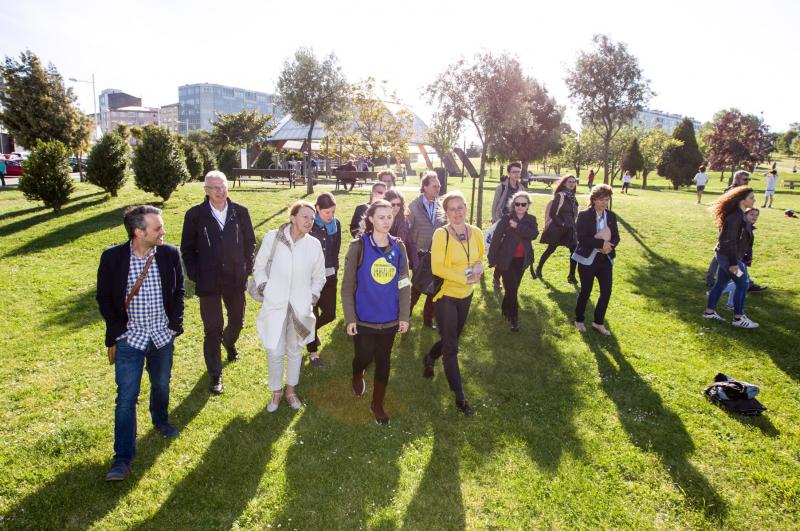
We would also like to express our gratitude to the more than one-hundred attendees which joined the excursions to three different nature-based solutions on the first day of the event. We visited the Natural Area of the Park of the Tower of Hercules, walking around the world heritage Roman lighthouse, in an area of rich biodiversity preserved from the city's urban development process.
The Mayor of A Coruña was happy to accompany the visitors of the Eirís Park Area. This park used to be an industrial area, in which the adoption of NBS has allowed the recovery of space for citizens, with recent interventions in urban gardening and leisure areas for children, locals and visitors. Besides, the restoration of this area enabled the creation of a natural pond where a diversity of birds, insects, reptiles and amphibians live now in the Eirís Park, which in itself has become an excellent resource for environmental education.
We also visited the Natural Area of the Park of the Tower of Hercules, walking around the world heritage Roman lighthouse, in an area of rich biodiversity preserved from the city's urban development process. As the next picture shows, participants completed a cycling route on A Coruña’s seaside promenade that runs along the Atlantic facade of the city.
The excursions allowed the attendees to comprehend the great potential of A Coruña in uptaking nature-based solutions for improving sustainability and enhancing wellbeing in the city. We expect that the outcomes of the European expert dialogue on nature-based solutions contribute to find better solutions addressing sustainable urban development.
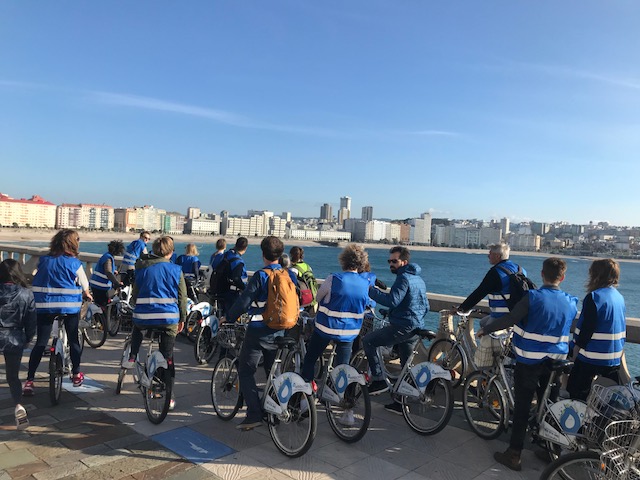
This blog is also available on our website in Galician to view click here.
